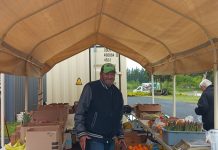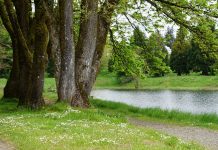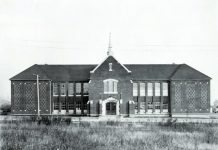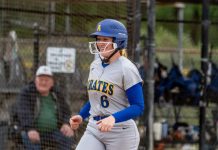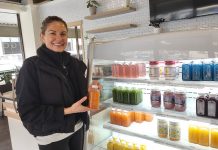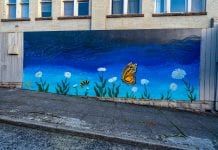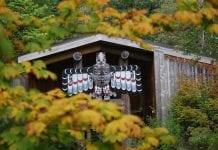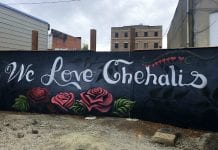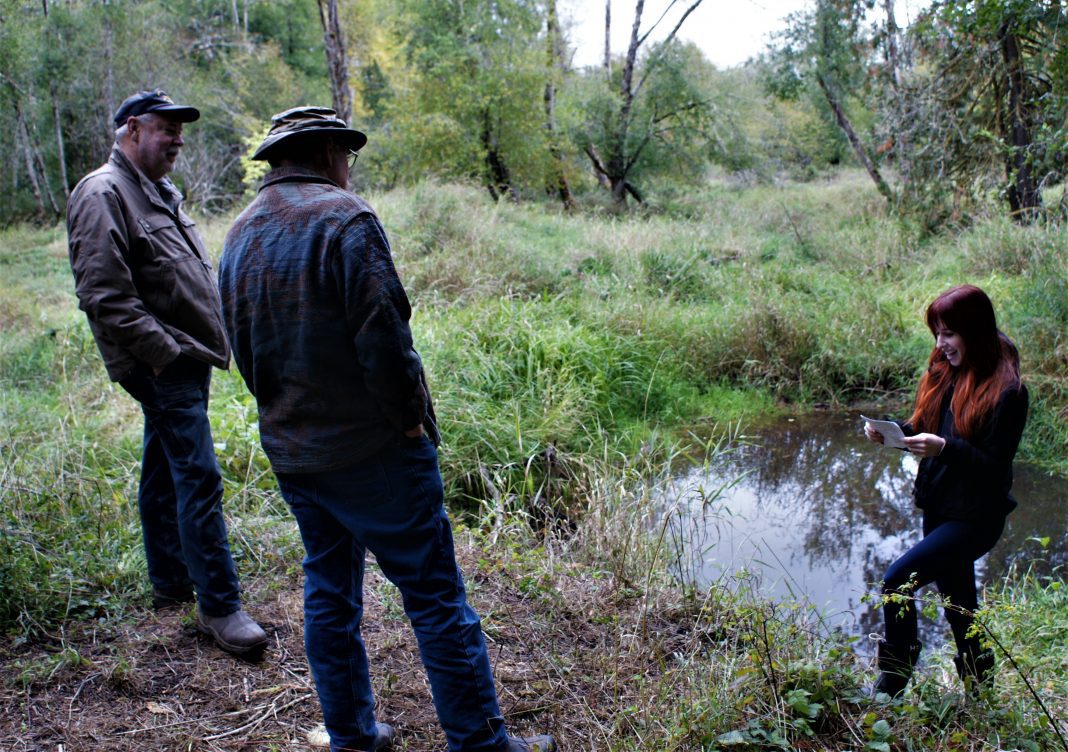Submitted by Chehalis Basin Lead Entity
To celebrate a successful salmon habitat restoration project, Lewis Conservation District (LCD) invited the public on a nature walk to tell the Wisner Creek Restoration Story. The walk was the kickoff for the newly established Lewis County Stream Team.
The tour of Wisner Creek began with a history of the land:
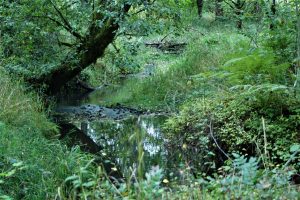
For many years, historic runs of Coho salmon on Wisner Creek had been lost because of damage to the original stream channel. The disturbed habitat was quickly taken over by highly invasive reed canary grass, and other noxious weeds – which further clogged up the previously flowing water.
In 2013, The LCD team including Kelly Verd and Nikki Atkins, met with landowner Bob Russell, and other landowners with the Beaver Glen Homeowners Association (BGHA) to let them know that Wisner Creek used to flow and contain salmon.
Located in Adna, the land is home to stretches of Mill and Wisner Creeks and empties into the Chehalis River some three miles from the property. After learning of the historic salmon runs, Bob, and association members were very enthusiastic about restoring the creek as a habitat for salmon.
LCD eagerly applied for stream restoration grant funding. Undeterred after two denials, LCD applied for the third time – and in 2015 were successful. Russell convinced the Salmon Recovery Funding Board that the restoration project would be fruitful.
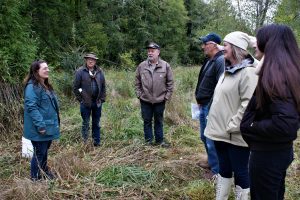
“My partners and I are convinced that the greater good for all of us is to revitalize the fish habitat on the land and combine that with a wetlands park,” said Bob.
Prompted by the success of the salmon restoration project and the ongoing enthusiasm of Bob Russell, Vanessa Leigh, LCD intern with the Veteran’s Conservation Corps through the Department of Veteran’s Affairs organized the tour as the first Stream Team event this fall.
“This internship has allowed me to develop my interests after life in the military and connect me to wilderness and to local communities,” said Leigh.
Brothers Charlie and Mike Albrecht who grew up on land just upstream of Wisner Creek attended the tour.
“I have lived here my entire life, so when Bob Amrine, LCD district manager invited me to come on the tour, I was very interested,” said Charlie.
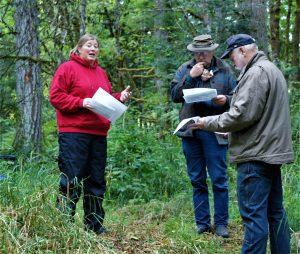
“I have worked most of my life in the woods and laying fish pipes and helping to reconstruct streams. My parents were also recognized in their work as tree farmers. We’ve also had an onsite salmon incubator in our stream for years now,” added Charlie.
There were three stations along the tour. Kenna Fosnacht, LCD Resource Technician and Stream Team Coordinator shared fun facts about beavers at the first station overlooking a beaver pond.
“I grew up alongside Scatter Creek, so have seen that beaver dams are not completely waterproof, which allows for streamflow during dry summers. The beaver ponds also provide great browsing habitat for wildlife including deer and elk because of the lush vegetation that grows along the waters they hold back,” added Kenna.
Staffing the second station was Nikki Atkins who discussed salmon. Nikki shared that the Wisner Creek Channel Reconnection Project began in late 2015 and was completed in 2018. The project reconnected a 300- foot portion of the streambed, according to Nikki, “to near-natural conditions.” It also opened up almost a mile of suitable salmonid rearing and spawning habitat.
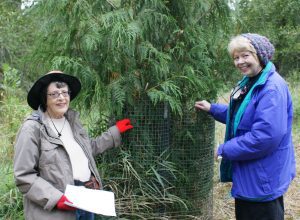
Nikki quizzed participants on their knowledge of salmon:
“How many eggs do you think a female coho salmon lays?” asked Nikki. The group was amazed by the answer: 2,400 to 5,000 eggs.
Nikki is the Conservation Reserve Enhancement Program (CREP) coordinator at LCD, and one of her jobs is to check out culverts — pipes carrying water under roads — to see how “passable” they are for the different life stages of salmon.
“‘When I first started with LCD, it was because it was a job. Now, I stay because of the progress I see. When we plant trees, in ten years it becomes a forest, which is very exciting, as we have habitat coming back.”
At the third station, Kelly Verd, Special Projects Coordinator at LCD, told of how after the streambed was reconfigured, LCD, landowners, neighbors, and teens from the Lewis County Juvenile Detention Center all came together and planted 950 species of native plant species to re-establish the upland meadow and riparian buffer along the creek. The landowners have been active in maintaining the newly planted natives. The mostly wet soil varieties planted include cottonwoods, cedars, spruce, swamp crab apple and vine maples —- 20 species in all.
Kelly invited the participants to continue to restore the riparian zone of the creek by planting willow stakes along the creek.
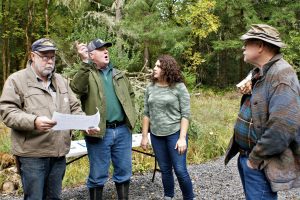
Joining her parents, local resident Claire Kuykendall, planted a willow stake. “I am excited to see how beavers have changed the creek and the different wildlife the area now supports,” said Claire.
Continuing to learn about ways they can steward the land, Lewis County residents and conservationists Judy Bell and Kathy Tennyson enjoyed the nature walk and noted the healthy cedars growing tall and outcompeting the invasive reed canary grass.
Wisner Creek is now reconnected, native plants are growing and flourishing, healthy salmon habitat is being established – and salmon are once again calling – ‘Wisner Creek’- home.
“We make a difference, one small creek at a time,” shared Kelly.
Lewis County Stream Team will involve the community in education and outreach activities for the protection and restoration of salmon habitat and are currently funded by the Office of the Chehalis Basin. For more information on ways to get involved with Lewis County Stream Team, please contact Kenna Fosnacht at kenna.fosnacht@lewiscdwa.com.
This publication is part of the Chehalis Basin Lead Entity’s “Watershed Hero” series to celebrate the work of Chehalis Basin residents for their restoration of native ecosystems that salmon and other wildlife need in the basin. For more information, visit the Chehalis Basin Lead Entity website. Or contact Watershed Coordinator, Kirsten Harma at 360.488.3232.





